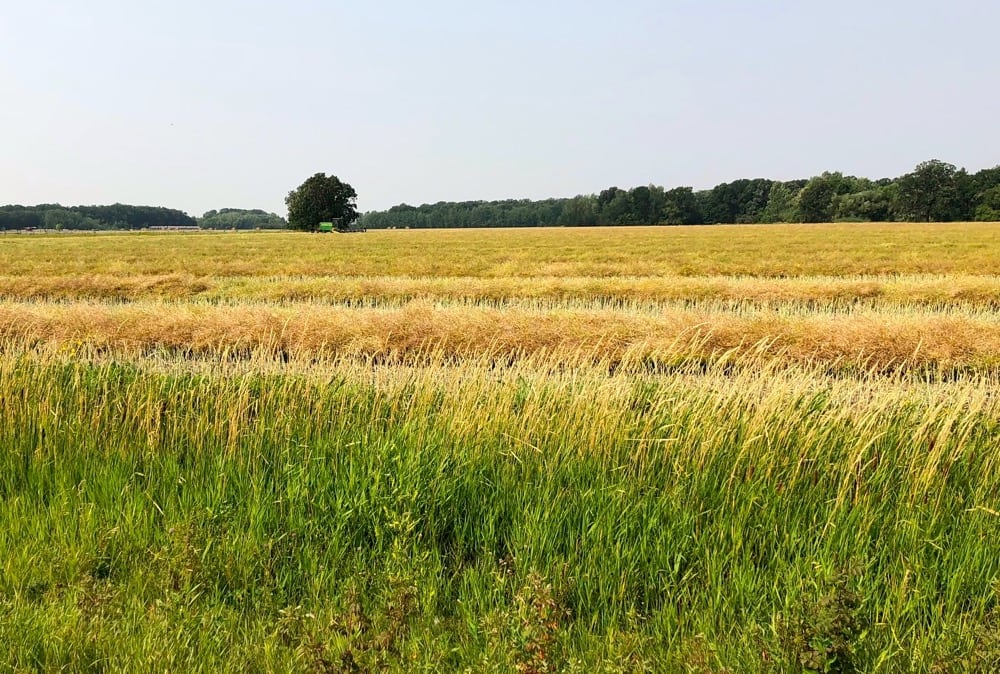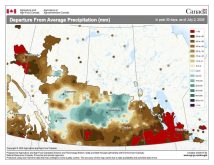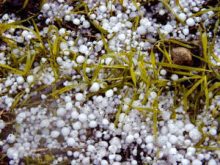Manitoba’s fields have had their feet to the fire this year as the province suffers through its second consecutive dry growing season — but Manitoba Agriculture data says this year might have actually been the wetter of the two.
Timi Ojo, meteorology specialist with Manitoba Agriculture, says more rain fell from May to late August this year than last summer, despite the common feeling that dry conditions have been worse this year.
“For the most part, around the agricultural region of Manitoba, we’ve been between, I would say, 65 to 85 per cent of normal. Last year, around this time, we were actually sitting mostly between 50 to 70 per cent across most areas,” he said.
Read Also

Thunderstorms and straight-line winds
Straight-line winds in thunderstorms can cause as much damage as a tornado and are next on our weather school list exploring how and why severe summer weather forms.
Ojo estimated that most regions have seen an inch more rain than last year on average.
The majority of the province saw less than 230 millimetres of rain from May to August this year. In a snapshot of stations taken from each region of the province, only Inglis in the northwest topped average moisture for growing season so far, Ojo reported during the last Crop Talk webinar of August.
Brandon, meanwhile, had seen 155 millimetres, or about 60 per cent of normal, while Moosehorn reported an extremely dry 122 millimetres of rain.
On average, 210 millimetres of rain fell in agro-Manitoba from May 1 to Aug. 26, according to Manitoba Agriculture data, compared to 184 millimetres the year before. Central Manitoba averaged 197 millimetres of rain, compared to 168 millimetres last year, while the southwest saw 202 millimetres compared to 175 millimetres in 2017. Only the Interlake was drier, with 191 millimetres of rain falling in the region, compared to 196 millimetres last year.
The answer to why it feels drier lies in the groundwater, according to Ojo. Groundwater reserves dropped this year after both last year’s dry summer and lack of snowfall over the winter. Much of the province had less than 50 per cent of average precipitation from November to April. In eastern Manitoba and the Interlake, Manitoba Agriculture did not record a station with more than half of normal precipitation, while areas like McAuley, McCreary and Wasagaming came the closest to normal moisture, ranging anywhere from 60 per cent to 84 per cent of normal.
Groundwater monitoring at Oak Lake showed a substantial drop this year, Ojo said, using the station as an example.
Around this time in 2017, the station showed the water table at 4-1/2 feet below the soil surface. A year later, that same water table has dropped to six feet underground.
“We actually had quite a bit of a moisture reserve underground. When you contrast that to this year, we’ve actually drawn most of the water down quite a little bit,” he said.
“It’s easy to look at precipitation as the only estimate for soil moisture, but last year groundwater played a very key factor in supplying soil moisture when precipitation was limiting,” he added. “I believe it also did quite a bit this year.”
Historically, water table levels are still high, Ojo said. The station saw much lower levels in the ’80s and ’90s, climbing in the 2000s and ’10 to some of the highest levels in decades.
Others have argued that what rain has fallen this year has been sporadic, with patchy thunderstorms dropping a deluge on some, while land only miles away sees little benefit.
Patchy rainfall has been noted by Manitoba Agriculture livestock and extension staff in recent months.
“It’s easy to just look at the total amount of precipitation,” Ojo said, adding that agricultural output is more impacted by steady rains at “specific intervals.”
“When you have about three inches of rainfall within a couple of hours, it doesn’t really do so much to help the soil moisture,” he said.
This year’s heat has also done little to dispel drought-stress anecdotes this year. The second week of August saw record-breaking heat, with temperatures ranging as high as 40 C. Winnipeg, meanwhile, has recorded twice as many days over 30 C this year as normal.




















